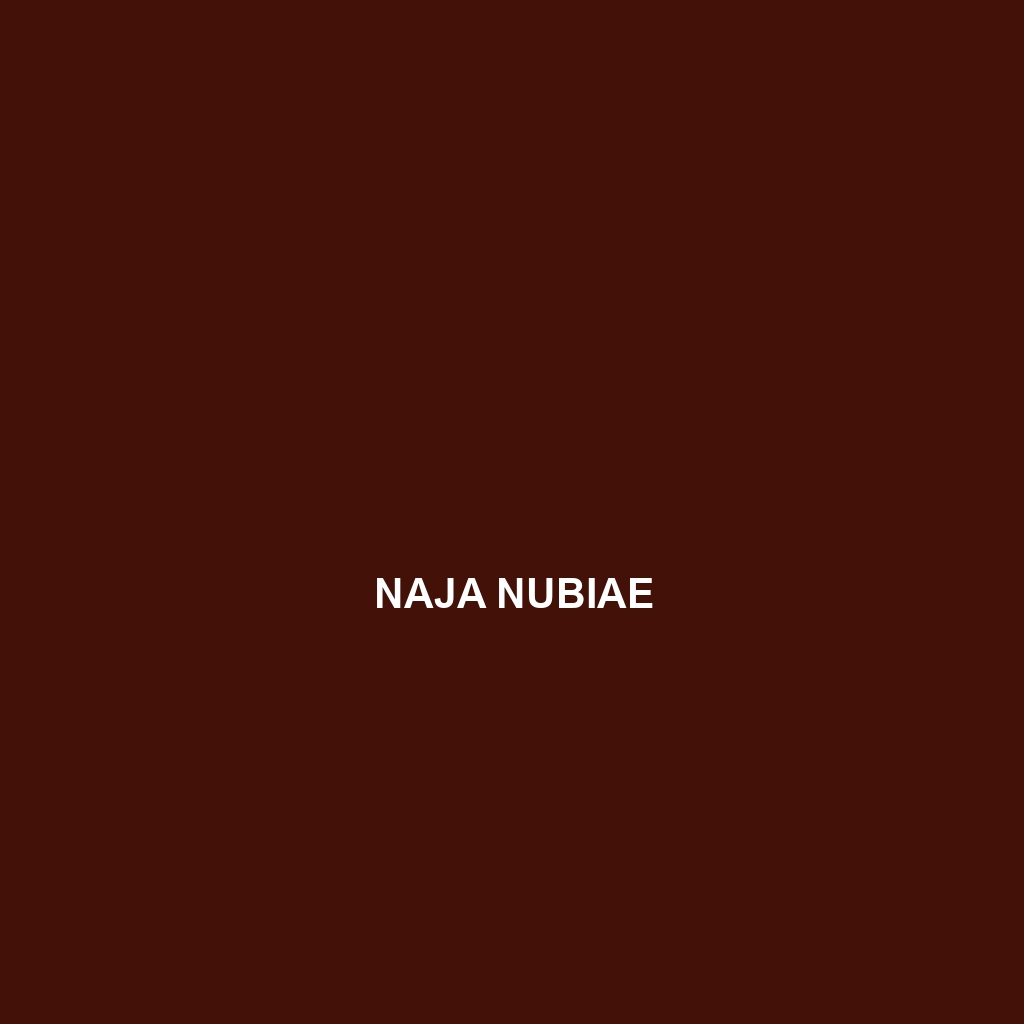Common Name
Naja nubiae
Scientific Name
Naja nubiae
Habitat
Naja nubiae, commonly known as the Nubian cobra, is primarily found in the northeastern regions of Africa, particularly in countries such as Sudan and Ethiopia. This species thrives in diverse habitats ranging from savannas to temperate forests, which offer an array of environmental conditions conducive to its survival. The Nubian cobra is often spotted near water sources, including rivers and streams, indicating a preference for areas with ample moisture. Additionally, these snakes can inhabit rocky terrains and agricultural lands, showcasing their adaptability to varying geographic and climatic scenarios.
Physical Characteristics
The Naja nubiae exhibits several distinctive physical features making it recognizable among its kin. Adults typically range in length from 1.2 to 2.2 meters (4 to 7 feet), with a robust body that allows for effective movement in diverse environments. The coloration of the Nubian cobra varies significantly, ranging from light brown to deep olive and occasionally exhibiting darker bands along the body. One of its remarkable traits is the large, rounded hood it can display when threatened. The Nubian cobra’s head is broad, with large, prominent eyes that enhance its predatory capabilities, making it an efficient hunter.
Behavior
Diet
The Naja nubiae is classified as a carnivore, primarily preying on small mammals, birds, and other reptiles. These snakes have developed a preference for rodents, which constitute a significant portion of their diet. Their hunting technique includes an ambush strategy, where they remain still and blend into their surroundings until an unsuspecting prey approaches. Once close enough, they strike with incredible speed, delivering a potent neurotoxic venom that paralyzes their prey, allowing them to consume it with relative ease. This efficient feeding strategy highlights their role as both a predator and a regulator of prey populations in their ecosystem.
Reproduction
Naja nubiae engages in a fascinating reproductive cycle, generally mating during the rainy season, which enhances the survival rates of their offspring due to increased moisture. After mating, the female lays approximately 20 to 30 eggs in sheltered, warm, and moist environments, such as under leaf litter or in abandoned burrows. The incubation period lasts around 60 days, after which hatchlings emerge at roughly 25 to 30 centimeters (10 to 12 inches) in length. These young snakes are independent from birth and must fend for themselves immediately, as maternal care is nonexistent. The high mortality rate among juveniles emphasizes the challenges these young snakes face in their early days.
Conservation Status
Currently, the conservation status of Naja nubiae is listed as Least Concern according to the IUCN Red List. Despite its stable population in some areas, threats such as habitat destruction, climate change, and human-wildlife conflicts pose challenges to its long-term sustainability. Conservation efforts include habitat protection and public awareness campaigns to mitigate negative interactions between humans and Nubian cobras. Monitoring populations through research initiatives is also essential for ensuring that the conservation status remains secure.
Interesting Facts
One of the most fascinating traits of Naja nubiae is its ability to adapt its hunting techniques depending on the type of prey available. In areas where rodents are scarce, these snakes may shift their diet to include larger birds or even other reptiles. Additionally, the Nubian cobra can store venom in its fangs, allowing it to administer precise doses when hunting. This remarkable adaptation underscores the incredible evolutionary traits of this species.
Role in Ecosystem
Naja nubiae plays a crucial role in its ecosystem as both a predator and prey. By feeding on small mammals and birds, it helps regulate their populations, thus promoting a balanced ecosystem. Moreover, it serves as a food source for larger predators, including birds of prey and some mammals, intertwining its existence within the food web. With their role as a predator and occasional competitor for other reptile species, the Nubian cobra exemplifies the delicate balance that maintains ecological health.
